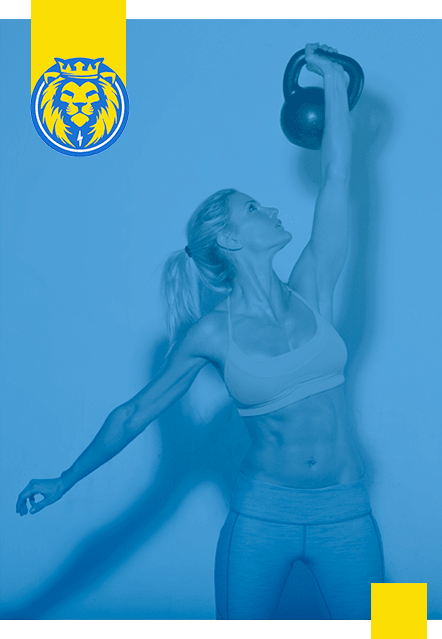
What is Bicep Tendonitis
Have you ever been in the gym or on the golf course or maybe playing tennis, and felt discomfort around the top of your shoulder or in your elbow, maybe it goes away quickly, maybe it lingers for a few days and then goes away or maybe it comes and goes with varying levels of pain and discomfort from being annoying to be unbearable. So, what the heck is going on in there? One of the more common injuries that gym goers, golfers and tennis players alike can suffer from is Bicep Tendonitis, now what causes the tendonitis can be different from person to person, however the most common cause is from overuse, or repetitive motions like a golf swing. It can develop over time or can result from a direct injury to other structures as well like a rotator cuff tear or a shoulder impingement. So, what happens during the injury? And how can we treat it? Let begin with what is happening in the body around the shoulder and tendon.
Quick Anatomy Lesson
The biceps muscle goes from the shoulder to the elbow on the anterior arm. Two separate tendons connect the upper part of the biceps muscle to the shoulder. The main proximal tendon is the long head of the biceps. It attaches the biceps muscle to the top of the shoulder. It also blends with the cartilage rim around the shoulder and the labrum. The labrum is a border of soft tissue that turns the smooth surface of the shoulder into a deeper socket. This makes for improved fitting of the ball that fits in the socket, making our ball and socket joint in the shoulder. Starting at the top of the Shoulder, the tendon of the long head of the biceps runs in front of the arm, the tendon passes within the bicipital groove of the arm and is held in place by the transverse humeral ligament. This arrangement keeps the humeral head from gliding too far up within the shoulder. The short head of the biceps connects on the scapula (shoulder blade). The lower biceps tendon is called the distal biceps tendon, meaning it is attaching further down the arm (distal) and will attach at the elbow. The muscles forming the short and long heads of the biceps stay separate until just before the elbow, where they meet and attach at the distal biceps tendon.
That was a quick break down of the anatomy involving the bicep tendon, now just a quick break down of what a tendon is and how it works.
What is a Tendon?
Tendons are made up of strands called collagen. The collagen strands are formed up in bundles next to each other. Since the collagen strands in the tendons are lined up, tendons have high tensile strength, meaning they can withstand high forces that pull on either end of the tendon. When muscles work, they pull on one end of the tendon. While the other end of the tendon pulls on the bone, causing the bone to move. So, if we think of the bicep, contracting the biceps muscle can bend the elbow upward and the biceps can also help flex the shoulder, lifting the arm up, the muscle can also rotate, or twist, the forearm in a way that points the palm of the hand up. This movement is called supination, which positions the hand as if you were holding a tray.
So, what will cause tendonitis?
In most cases tendonitis, will result from repetitive shoulder actions that can result in overuse of the biceps tendon. This overuse will not allow the tendon time to recover or rest. This lack of rest does not allow the muscle or surrounding structures including the tendon time to repair themselves which in turn causes inflammation and soon after tendonitis. This is often seen in sports that involve excessive overhead movements including throwing, swimming and swinging a racquet, club or bat. Other reasons for the inflammation can vary from years of shoulder wear and tear causing the biceps tendon to become inflamed, Degeneration in a tendon that will cause a loss in the structure of collagen fibers that come together to form the tendon itself, sometimes you can see a jumbling of the fibers or even a breaking of the fibers leading to a loss in strength. When this happens in the biceps you can see heavy inflammation, and at times can lead to a rupture of the biceps tendon. There are other ways that bicep tendonitis can occur, including from either a direct injury to the area from a fall or a crash direct to the shoulder, or it can happen alongside another injury such as a shoulder tear or rotator cuff injury, this form of bicep tendonitis is usually referred to as secondary since it came on as the result of another more serious injury, and in most of the injury cases the loss of stability within the shoulder is the key factor.
What does Bicep Tendonitis feel like?
In most cases those suffering from bicep tendonitis will say that they have the feeling of a deep pain right in the front part and towards the top of the shoulder. Sometimes people will report that the pain will shoot down towards the main part of the biceps. Pain is most often replicated and can be made worse with any overhead activities. It will often be noted that someone dealing with pain finds that it will subside or may even go away for a while after allowing the shoulder to rest for an extended period which will ease the pain. At times the arm may feel weak with attempts to contract the bicep (think of a bicep curl) or when turning the forearm into supination (holding the tray). In some cases, it may feel like the muscle and/or tendon feels like it is catching or slipping over the top of the shoulder, which can be an indicator or a possible tear, and will lead back to the instability of the shoulder joint.
Treatment
So, what can you do if you are dealing with bicep tendonitis? The first step into treating it will usually start by resting the sore shoulder. This means avoiding the activity that seems to have caused the pain in the first place, and avoiding any overhead movements. Resting the shoulder can provide pain relief and can help to calm the inflammation. Anti-inflammatory medicine may be prescribed to ease pain and to help someone return to their normal activity as quick as possible. These medications include common over-the-counter drugs such as ibuprofen. In some cases, if simple rest and recovery is not enough working with a Physical therapist may be needed to help get hands on manipulation of the shoulder as well as a strengthening program for the shoulder. Massage Therapy is another avenue that can help mild cases, by having the therapist work the surrounding muscles and structures to provide relief to the bicep and shoulder avoiding excessive muscle tightness. A personal trainer can also help by helping establish a personal training routine that helps you heal and prevent further cases of tendonitis. In most all cases having a system in place that includes, rest and recovery along with a proper strengthening program for the shoulder to help with instability of the shoulder and finally working with a therapist to get soft tissue release and stretching will go a long way to help you recover and then prevent further cases in the future.
Ready to create a plan that supports you through every phase of life? Schedule a consultation at Legacy Personal Training in Scottsdale today! Our expert personal trainers can help men and women of Scottsdale, North Scottsdale, and DC Ranch develop a personalized fitness and nutrition program to help control and relieve tendonitis.

